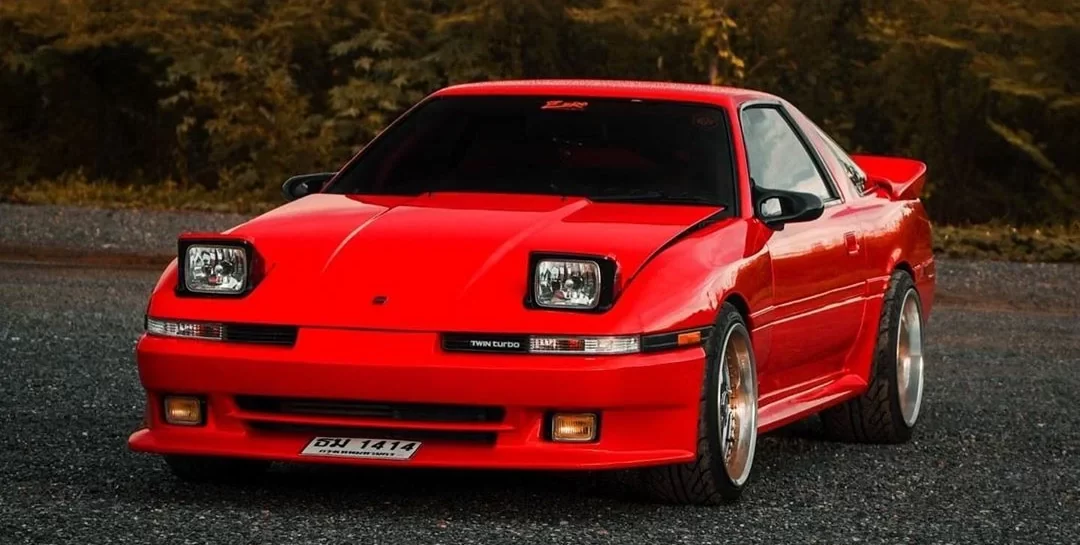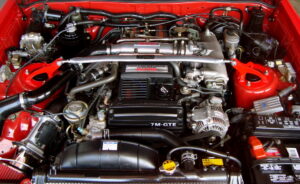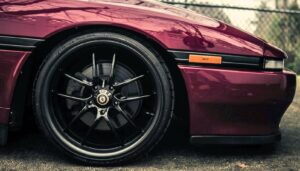Toyota Supra MK3 buyers guide
1. History about Toyota Supra MK3
History about Toyota Supra MK3
This is a guide for buying a Toyota Supra Mk3. The Toyota Supra MK3, also known as the Toyota Supra A70, was a sports car produced by Toyota from 1986 to 1992. It was the third generation of the Toyota Supra lineage and succeeded the MK2 model. The MK3 Supra was offered as a two-door coupe and was available in various trim levels and engine options across different markets.
The design of the MK3 Supra was influenced by its predecessor but featured more angular and aggressive styling cues. It had a longer and wider body compared to the previous models, providing increased interior space and improved aerodynamics. Throughout its production run, the MK3 Supra underwent several updates, including the introduction of turbocharged models.
Here is a list of all the models of the Toyota Supra MK3:
Toyota Supra 3.0i (non-turbo)
Toyota Supra 3.0i Turbo (Turbocharged)
Toyota Supra 3.0i Turbo Targa (Turbocharged, Targa Top)
Toyota Supra 3.0i Turbo Limited Edition (Turbocharged, Limited Edition)
Toyota Supra 3.0i Turbo 3rd Anniversary Edition (Turbocharged, 3rd Anniversary Edition)
Toyota Supra 3.0i Turbo Aerotop (Turbocharged, Aerotop)
Toyota Supra 3.0i Turbo Sport Roof (Turbocharged, Sport Roof)
Toyota Supra 3.0i Turbo R (Turbocharged, Performance-oriented R model)
Toyota Supra 3.0i Turbo RZ (Turbocharged, Top-tier RZ model)
Toyota Supra 3.0i Turbo RZ-S (Turbocharged, RZ-S model)
Toyota Supra 3.0i Turbo RZ-R (Turbocharged, RZ-R model)
Toyota Supra 3.0i Turbo SZ (Turbocharged, SZ model)
Toyota Supra 3.0i Turbo SZ-R (Turbocharged, SZ-R model)
Bodywork and interior
The Toyota Supra MK3 featured a sleek and aerodynamic body design, characterized by its pop-up headlights, pronounced front fenders, and a sloping rear end. The body panels were typically made of steel, and some later models had additional aerodynamic enhancements.
As for the interior, the MK3 Supra offered a driver-focused cockpit with sporty bucket seats and a center console that housed various controls. Depending on the trim level, the interior materials ranged from cloth and vinyl to leather upholstery. The dashboard featured a mix of analog and digital instruments, including a speedometer, tachometer, and other essential gauges.
Engine and transmission
The Toyota Supra MK3 came with several engine options, depending on the market and model year.
Here are some key specifications for both engines:
- 7M-GE (3.0-liter inline-six):
Power Output: Approximately 200 to 220 horsepower
Torque: Approximately 185 to 210 lb-ft (250 to 285 Nm)
Aspiration: Naturally Aspirated
- 7M-GTE (3.0-liter inline-six with turbocharger):
Power Output: Approximately 230 to 250 horsepower
Torque: Approximately 240 to 260 lb-ft (325 to 353 Nm)
Aspiration: Turbocharged with Intercooler
As for the transmission options, the MK3 Supra offered both a 5-speed manual transmission and a 4-speed automatic transmission. The manual transmission was favored by driving enthusiasts for its engaging nature and better control over the engine’s power delivery. On the other hand, the automatic transmission provided a more relaxed driving experience, making it suitable for daily commuting and cruising.
Overall, the combination of the powerful inline-six engines and transmission choices contributed to the Toyota Supra MK3’s reputation as a thrilling and enjoyable sports car to drive.
Suspension and steering
The Toyota Supra MK3 featured a well-engineered suspension system that contributed to its balanced handling and sporty driving characteristics. The suspension setup consisted of a front MacPherson strut design and an independent double-wishbone setup at the rear.
- Front Suspension (MacPherson Strut):
The front suspension utilized MacPherson struts, which are a common design in many cars. MacPherson struts combine a shock absorber and a coil spring into a single unit, providing effective damping and support for the front wheels. This design helped the Supra maintain stability during cornering and provided a smooth ride over varying road surfaces. - Rear Suspension (Independent Double-Wishbone):
At the rear, the Supra employed an independent double-wishbone suspension system. This setup allowed each rear wheel to move independently, improving tire contact with the road and enhancing traction and handling. The double-wishbone design also contributed to a more responsive and controlled ride. - Steering:
The steering system of the Toyota Supra MK3 was equipped with a rack-and-pinion setup. Rack-and-pinion steering is widely regarded for its direct and precise feel, translating the driver’s inputs into quick and predictable responses from the car. This steering system, combined with the Supra’s well-tuned suspension, offered an engaging and enjoyable driving experience. - Suspension Tuning:
Toyota engineers fine-tuned the suspension and steering to strike a balance between sporty handling and ride comfort. While the MK3 Supra had a performance-oriented nature, it also provided a level of comfort suitable for daily driving. - Aftermarket Modifications:
Many Toyota Supra MK3 owners, particularly car enthusiasts, explored aftermarket options to enhance the car’s suspension and steering further. Upgraded coilover kits, strut tower braces, sway bars, and polyurethane bushings were among the popular modifications to improve handling, reduce body roll, and increase responsiveness.
Wheels, tyres and brakes
The MK3 Supra came equipped with a range of wheel options, typically made from aluminum alloy. The wheel sizes varied depending on the trim level and market specifications. Owners often customized their wheels to enhance the car’s appearance and performance.
The tires were designed to complement the Supra’s sporty character, offering a mix of grip and performance suitable for various driving conditions.
In terms of brakes, the MK3 Supra featured disc brakes on all four wheels, providing reliable stopping power. As with other aspects of the car, the braking system’s performance could be further improved through aftermarket upgrades and modifications.
Please note that specific details and configurations might vary depending on the year of production and regional specifications of the Toyota Supra MK3.
Are you already a proud owner of a Toyota Supra MK3? If so, check out our selection of parts for this car at the following link:
https://octoclassic.com/product-category/toyota/mk3
Photos sources: Reddit, Pinterest, qzbefzrora.blogspot.com, pinterest.jp












